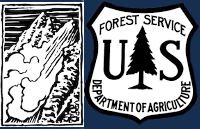Southern Madison
New Snow on Ernie Miller Ridge
We toured over south Bacon Rind and into Ernie Miller Ridge today. The weather was variable, alternating between periods of calm winds and warm sun, and periods of heavy cloud cover, snow, and high winds. At the summit winds were strong out of the SW, but previous wind deposits further down pointed towards recent Northerly winds. These were strong enough to scour snow off the crust, and create drifts up to a foot deep. The sun was also affecting the snow surface, rapidly warming and wetting the snow above the crust. This wet snow was not bonding well to the crust. Some cold snow remained and made for good skiing.
We took the variability of the snowpack and the risks of a consequential slide into account and traveled through moderate terrain, avoiding excessive exposure.
Wet Slab Avalanche Lightning Ridge
The notable avalanche activity in the Taylor Fork was a full-depth wet slab avalanche that broke last week during the warm-up on Lightning Ridge.
Small Wind-Slab Avalanche Sunlight Basin
We saw one new wind-slab avalanche in Sunlight Basin. It was small. From a distance, it appeared to be about 6" deep and 30' across (R1-D1).
There was a full-depth wet slab avalanche that broke last week during the warm-up on Lightning Ridge. GNFAC
We saw one new wind-slab avalanche in Sunlight Basin. It was small. From a distance, it appeared to be about 6" deep and 30' across (R1-D1). GNFAC
Spring cornices are growing very large above many wind-loaded slopes. GNFAC
New Weak Layer in the Taylor Fork
We rode into the weather station, across to the Wilderness Boundary, along the ridgeline to the Beaver Slide, and back. We saw one new wind-slab avalanche in Sunlight Basin. It was small. From a distance, it appeared to be about 6" deep and 30' across (R1-D1). The other notable avalanche activity was a full-depth wet slab avalanche that broke last week during the warm-up on Lightning Ridge.
We dug a 150 cm deep pit at the Wilderness Boundary. The basal facets and depth hoar were moist. The upper-level melt-freeze crusts were so thick and hard that even with a saw assist, we could not isolate the column to the ground. There were two newish near-surface facet layers in the upper 10" of the snowpack. No hazard now, but they will be something to watch when loaded.
